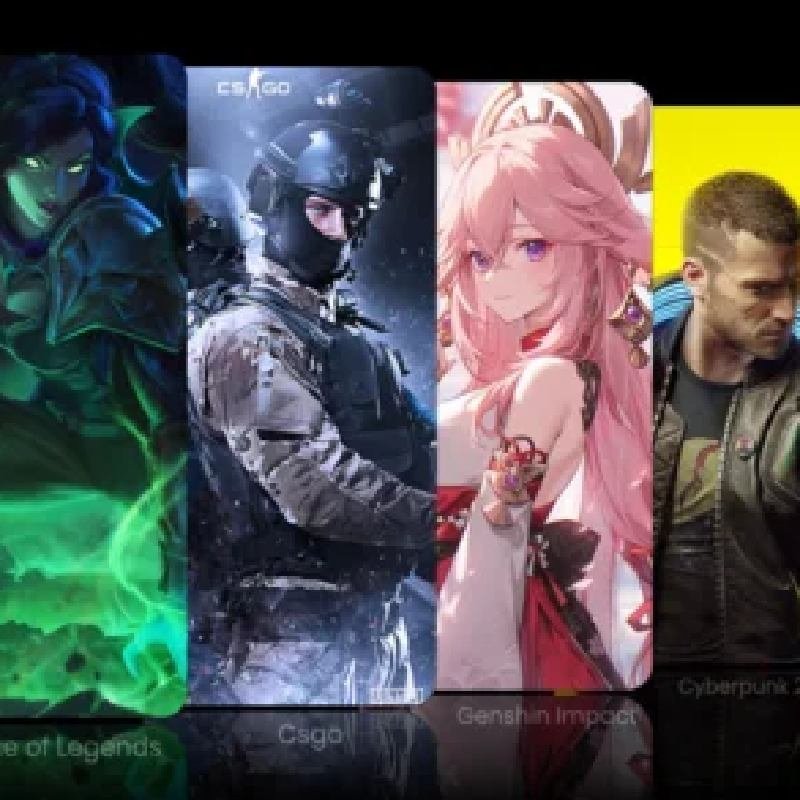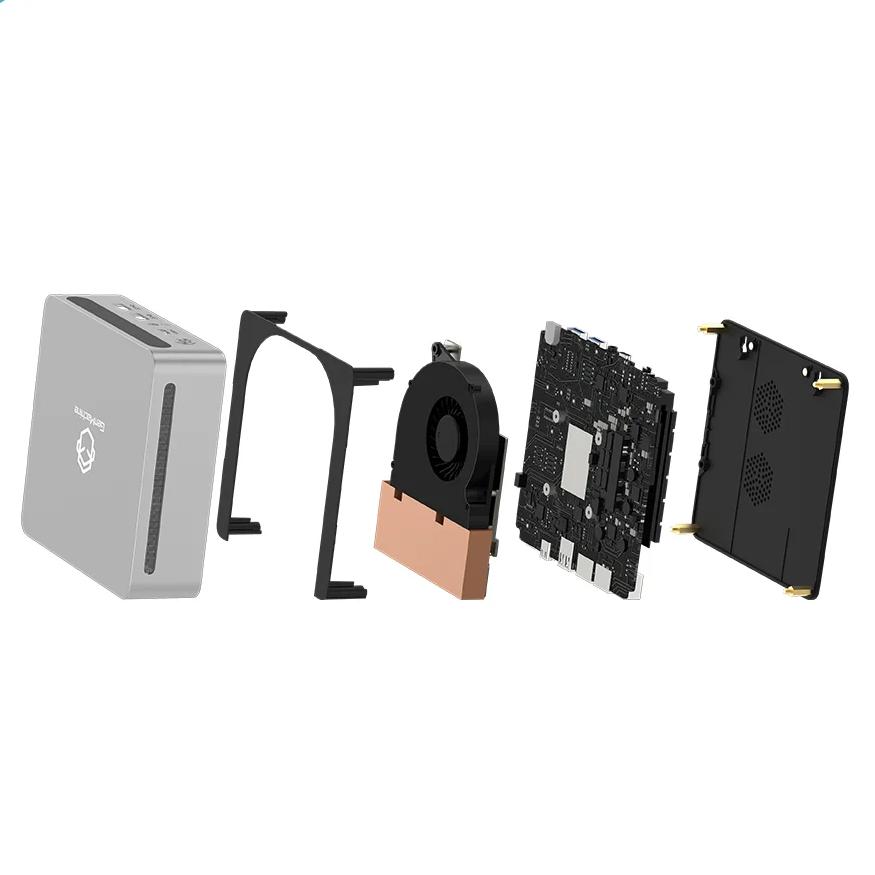The world of video editing has, for the longest time, been dominated by massive, glowing towers. The logic was simple: you need big power, which means big components, big cooling, and a big case to hold it all. But times are changing. The allure of a minimalist, clean desk setup is strong, and a new generation of tiny computers is challenging the old way of thinking. This brings us to the Ryzen 7000 Mini PC lineup. Can a box that fits in the palm of your hand really be powerful enough for smooth video editing?
The APU is the Secret Weapon
The game-changer here isn’t just the CPU; it’s the APU, or “Accelerated Processing Unit.” This is AMD’s term for a chip that combines powerful CPU cores with surprisingly capable integrated graphics (iGPU) on the same die. In a mini PC, there’s no space for a giant, power-hungry NVIDIA or AMD graphics card. The iGPU has to do all the heavy lifting.
And with the Ryzen 7000 series, it finally seems ready for the spotlight. The integrated graphics, particularly the newer RDNA 3 architecture, are not just for displaying spreadsheets. They have dedicated media engines built to accelerate video encoding and decoding (like H.264 and HEVC/H.265), which is the bread and butter of video editing. This acceleration is what keeps your timeline from turning into a slideshow. In the following parts, we will fouc on the performance of 3 representative Ryzen 7000 CPUs: Ryzen 7 7735HS, Ryzen 7 7840HS, and Ryzen 9 7940HS.

The Contenders: A Quick Breakdown
| Feature | Ryzen 7 7735HS | Ryzen 7 7840HS | Ryzen 9 7940HS |
| CPU Architecture | Zen 3+ (“Rembrandt-R”) | Zen 4 (“Phoenix”) | Zen 4(“Phoenix”) |
| Graphics | Radeon 680M (RDNA 2) | Radeon 780M (RDNA 3) | Radeon 780M (RDNA 3) |
| Max Clock Speed | Up to 4.75 GHz | Up to 5.1 GHz | Up to 5.2 GHz |
| Typical Niche | Budget / Value | The Sweet Spot | High-Performance |
That first row, CPU Architecture, is the most important detail. The 7735HS is essentially a re-badged chip from the previous generation. It’s still very capable, but the 7840HS and 7940HS are built on the newer, faster, and more efficient Zen 4 architecture. This means they’re not just faster on paper; they have better single-core performance, which makes the whole editing experience—scrubbing, playback, applying effects—feel much snappier.ttis, pulvinar dapibus leo.
Tip: For smooth editing, aim 16GB RAM minimum and a PCIe 4.0 NVMe SSD of at least 1TB.
Real-World Editing: Short Clips vs. Big Projects
So how do these chips handle actual editing? It really depends on what you’re editing.
For Short-Form Content (TikTok, Reels, Shorts)
This is where a ryzen 7000 Mini PC absolutely shines. This type of editing usually involves 1080p or 4K clips, but they’re short. The workflow is all about quick cuts, text overlays, simple transitions, and maybe a color-grading filter.
Ryzen 7 7735HS: More than enough. The Radeon 680M graphics are excellent for this. You’ll get smooth playback and fast exports for these 1-2 minute videos. It’s a budget workhorse.
Ryzen 7 7840HS / 7940HS: These might even be overkill, but the RDNA 3 graphics (Radeon 780M) are even more future-proof. They also include an AV1 encoder, which is a huge deal as platforms like YouTube push this new format. The timeline will feel buttery smooth.
For a content creator focused on social media, any of these machines will feel like a huge upgrade from an older laptop.

For "Normal" Video Editing (YouTube, Corporate)
This is the real test. We’re talking 10-20 minute projects, multiple 4K timelines, color correction, noise reduction, and some motion graphics. This is where the differences appear.
Ryzen 7 7735HS Mini PC: This is where you’ll feel the Zen 3+ architecture. It will get the job done, make no mistake. But when you start stacking 4K clips or add a heavy effect like noise reduction, the playback might start to stutter. You’ll probably want to edit using half-resolution proxies for a smoother experience. Rendering (exporting) will be noticeably slower than its siblings.
Ryzen 7 7840HS Mini PC: This is the sweet spot. The combination of fast Zen 4 cores and the powerful Radeon 780M iGPU strikes an incredible balance. It can handle multiple 4K streams in DaVinci Resolve or Premiere Pro surprisingly well. You’ll still see stutters if you go wild with 10 layers of effects, but for 90% of a typical YouTube workflow, this chip is fantastic.
Ryzen 9 7940HS Mini PC: This is the 7840HS with a bit more clock speed. It is, objectively, the fastest chip. It will render your video a little quicker and might handle complex effects with a bit more grace. But… it comes with a catch.
The Big Problem with Mini PCs: Heat
A 7940HS runs hot. A 7840HS runs hot. All fast chips do. In a full-size tower, you just add a massive air cooler or a water-cooling loop. In a 4×4-inch box, you have one or two tiny laptop-style fans.
This is the “dirty secret” of the mini PC world: a chip is only as fast as its cooling.
A ryzen 7000 Mini PC from a manufacturer with a bad cooling design will cause that fast Ryzen 9 7940HS to overheat and “thermal throttle” (slow itself down) within minutes of starting a render. In that scenario, a well-cooled Ryzen 7 7840HS in a different brand’s mini PC will actually finish the render faster.
When shopping, it’s almost more important to read reviews about the cooling and fan noise of the specific model than it is to obsess over the 7840HS vs. the 7940HS.

Conclusion
Yes, absolutely… with a small “but.”
A ryzen 7000 Mini PC, particularly one with a Ryzen 7 7840HS, is an incredibly capable machine for video editing. It completely demolishes the needs of a short-form content creator and is more than powerful enough for most 1080p and even 4K YouTube-style editing.
Who is it for?
The hobbyist editor.
The social media content creator.
The YouTuber who wants a clean, portable setup.
Who is it not for?
The high-end professional editor working with 8K RED or Blackmagic RAW files.
Anyone doing intense visual effects or 3D rendering (like in After Effects or Blender).
For that, you still need a dedicated, high-end graphics card (dGPU), which these boxes simply don’t have. But for the vast majority of creators, the days of needing a giant tower are, quite possibly, over.




